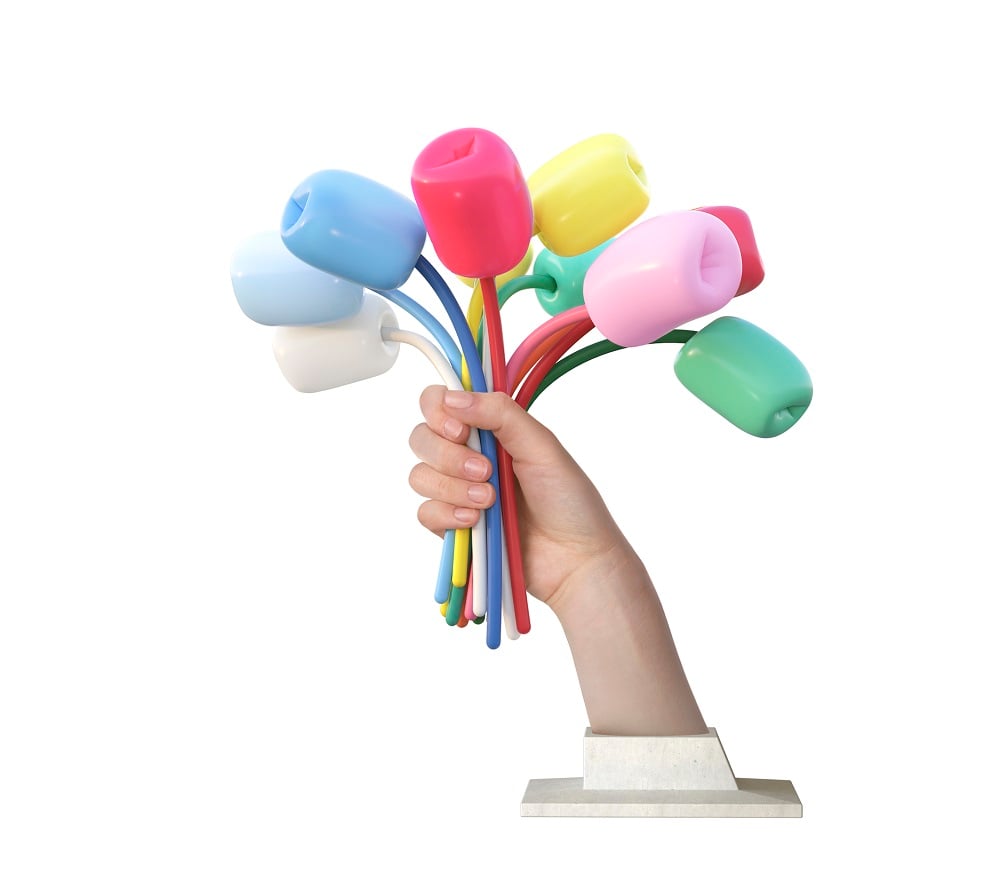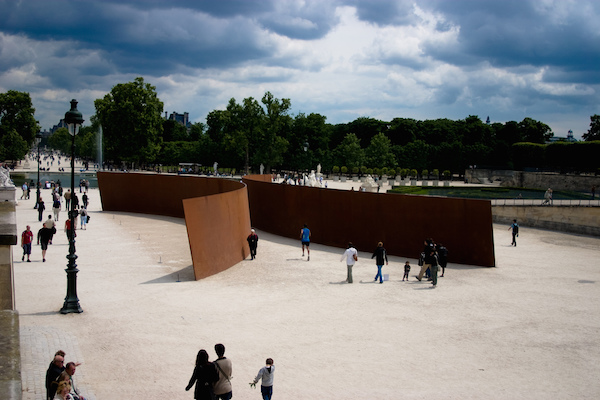Art World
It Belongs ‘In Front of Trump Tower’: The French Art World Continues to Slam Jeff Koons’s Paris Memorial
Koons has been sharply criticized for his plans to install the work in front of the Palais de Tokyo—across town from the Bataclan.

Koons has been sharply criticized for his plans to install the work in front of the Palais de Tokyo—across town from the Bataclan.

Sarah Cascone

Earlier this week, two-dozen professionals in the French art world signed an open letter urging Paris to reject Jeff Koons’s Bouquet of Tulips, a monumental sculpture planned as a memorial to the 2015 terrorist attacks at Paris’s Bataclan concert hall. artnet News has since followed up with some of the signatories about why they so vehemently object to the work—and their repulsion hasn’t waned.
“Jeff Koons’s current practice is closer to entertainment and speculation than to what I call—and I believe what most of the French would call—‘art,'” wrote Stéphane Corréard, director of the Galeristes salon, in an email to artnet News. “Installing such a sculpture in front of the [Palais de Tokyo] museum would make no sense. It would be like putting a Ronald McDonald statue in front of a gastronomic restaurant!”
“When there are horrible shootings, the custom is to put flowers on the floor, humbly, in a gesture of sorrow and respect. In this case it is a triumphant erection with no meaning at all, in a Disneyland aesthetic,” artist Tania Mouraud wrote in an email. “I think the best place for it would be in front of Trump Tower in New York.”

Jeff Koons, Bouquet of Tulips (2016). © Jeff Koons. Courtesy of Noirmontartproduction.
Koons has said that he specifically created the work “as a symbol of remembrance, optimism, and healing in moving forward from the horrific events that occurred in Paris.” Bouquet of Tulips “references the hand of the Statue of Liberty holding the torch. I wanted to make a gesture of friendship between the people of the United States and France.” Koons declined to comment.
Some observers find the work’s kitschy style disrespectful, while others take issue with Koons’s plan to place the work in front of the Palais de Tokyo, which is across town from the Bataclan. He is also calling the work a “gift” but it will actually cost French taxpayers €3.5 million ($4.3 million).
“I hesitated to sign, because I did not like the idea of petitioning against a project, even less an artist. But if I finally signed, it is not against Koons as an artist,” said Nicolas Bourriaud, director of Montpellier Contemporain, in a message to artnet News. “It is because in these times of privatization of the public sphere, I think that public art should be the emanation of collective action, and not imposed by any private entity to a chosen site.”
Others like the idea of erecting a memorial artwork, but think there are better alternatives. “The best piece would be a piece by Richard Serra called Clara Clara, which belongs to France and has been in storage now for 10 years,” said artist Christian Boltanski in an email.
The public might also have their own ideas, says Alexandre Gady, president of a French heritage protection society. “Public spaces are not private places for Mr. X or Mr. Y,” he wrote to artnet News. “Parisians must be consulted at least.” Gady would prefer a monument be erected on the site of the actual attacks.
“I think it should have been an open call for public art, a competition for artists who wanted to propose something and then have a jury with curators and families of victims who would decide which piece who represent best a memorial for them,” agreed gallery owner Gabrielle Maubrie, also in an email to artnet News. “In years to come, people will never know it is a memorial for the victims of the Bataclan.”

Richard Serra’s Clara Clara (1983), installed in Tuileries, Place de la Concorde, Paris. Photo via Flickr Creative Commons.
“I would think it would be important to consult with the families of the victims. Do they want a memorial? What kind and where should it be installed?” said Corréard of a possible replacement artwork. “The probability that they answer ‘a giant bouquet of inflatable floppy tulips in a morbid hyperrealist hand in front of two museums at the other side of the town’ is close to zero.”
Because the sculpture is already under construction and partially paid for, Corréard favors finding an alternate site for the work in France—“but a place that does not appropriate the prestige of leading cultural institutions merely to satisfy the will of the artist or the sponsors.”
Industrial designer Matali Crasset wondered, “What would be your reaction if a French artist paying tribute to the victims of the September 11 attacks offered the idea of an artwork whose cost must be financed by tax deductions and which would be placed in front the Whitney Museum or the New Museum?”